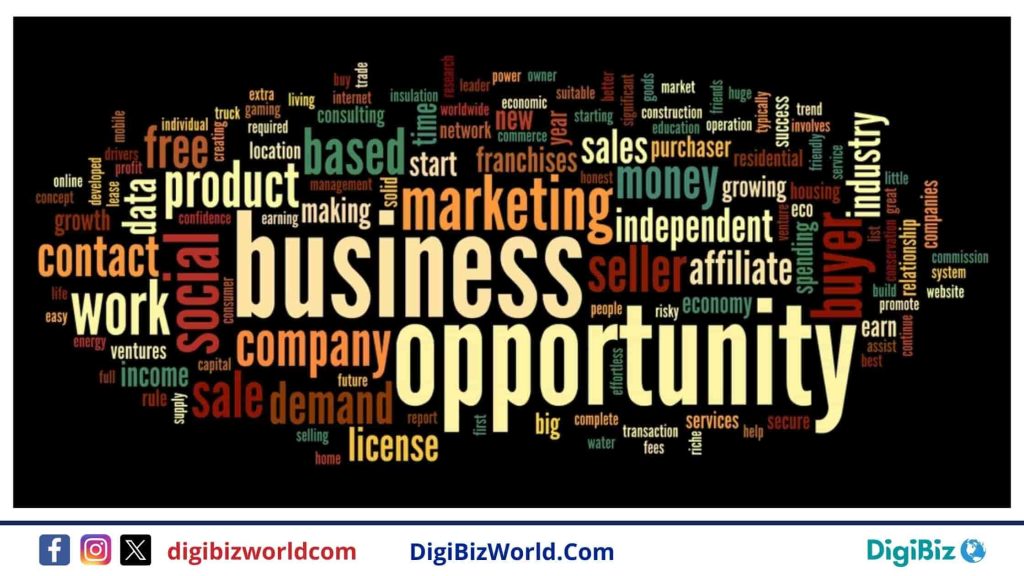30 Business Terms Entrepreneurs Should Know

Entrepreneurs are innovators and risk-takers who identify opportunities and create businesses to address market needs. They play a crucial role in driving economic growth, fostering innovation, and generating employment. Understanding key business terms is essential for entrepreneurs to navigate the complexities of starting and growing a successful business. These terms encompass various aspects of business operations, from financial metrics and market strategies to operational efficiencies and growth models. These concepts not only facilitate effective communication with stakeholders but also empower entrepreneurs to make informed decisions, craft strategic plans, and adapt to evolving market conditions. Mastery of these business terms is essential for establishing a solid and sustainable foundation for any enterprise.
List of 30 Business Terms Every Professional and Entrepreneur Should Know:
1. Revenue:
Revenue refers to the total income a company generates from its normal business operations, typically from selling goods and services to customers. the top line or gross income figure from which costs are subtracted to determine net income.
2. Profit:
Profit is a business’s financial gain when its revenue exceeds the expenses, costs, and taxes involved in sustaining its activities. Profit is calculated as Revenue – Expenses, and it serves as a key indicator of a company’s financial health.
3. Startup:
A startup is a newly established business in the initial stages of operations, often characterized by high uncertainty and risk. Startups are typically founded by entrepreneurs who develop a unique product or service and seek to scale it quickly.
4. Business Model:
A business model outlines how a company creates, delivers, and captures value. It includes the company’s value proposition, target customer segments, revenue streams, cost structure, and key activities required to run the business.
5. Cash Flow:
Cash flow is the net amount of cash and cash equivalents moving into and out of a business. It is a crucial measure of a company’s financial health, indicating whether it has enough liquid assets to cover its short-term obligations.
6. Equity:
Equity represents the value of an ownership interest in a company, typically in the form of stock. It is calculated as the difference between the value of the assets and the value of the liabilities owed by the company.
7. Market Research:
Market research involves gathering, analyzing, and interpreting information about a market, including details about the target audience and competitors. It helps businesses understand market needs, size, competition, and other factors influencing business success.
8. Venture Capital:
Venture capital is a form of private equity financing provided by investors to startups and small businesses with high growth potential. Venture capitalists typically receive equity or an ownership stake in the company in exchange for their investment.
9. ROI (Return on Investment):
ROI is a performance measure used to evaluate the efficiency of an investment or compare the efficiency of several investments. It is calculated by dividing the net profit from an investment by the cost of the investment, often expressed as a percentage.
10. Pivot:
A pivot is a fundamental change in a business’s strategy, product, or business model to better meet market demands or overcome challenges. It often involves changing the focus to a different customer segment, value proposition, or technology.
11. Branding:
Branding is the process of creating a unique identity for a product or company in the consumer’s mind through marketing, advertising, and customer interactions. Effective branding differentiates a business from its competitors and creates a lasting impression.
12. Lean Startup:
The Lean Startup methodology focuses on developing businesses and products through iterative testing and customer feedback to shorten development cycles, measure progress, and validate learning. It aims to avoid waste and ensure that new products meet customer needs.
13. B2B (Business to Business):
B2B refers to transactions conducted between businesses, such as between a manufacturer and a wholesaler or a wholesaler and a retailer. It contrasts with B2C transactions, which are conducted between businesses and individual consumers.
14. B2C (Business to Consumer):
B2C refers to transactions where businesses sell products or services directly to individual consumers. This is the most common type of transaction, involving everyday purchases such as clothing, electronics, and food.
15. IPO (Initial Public Offering):
An IPO is the process by which a private company offers shares to the public for the first time. This process helps companies raise capital from public investors and can significantly increase a company’s exposure and credibility.
16. Burn Rate:
Burn rate is the rate at which a company spends its cash reserves to cover overhead before generating a positive cash flow from operations. It is a critical metric for startups, indicating how long they can sustain their operations without additional funding.
17. MVP (Minimum Viable Product):
An MVP is an early version of a product that includes just enough features to be usable by early customers. The goal is to gather feedback for future development, minimizing the time and resources spent on building products that may not meet market needs.
18. Bootstrapping:
Bootstrapping is the practice of starting and growing a business with limited external funding, relying primarily on personal finances and revenue generated by the business. Bootstrapping can help entrepreneurs maintain control over their company.
19. Angel Investor:
An angel investor is a high-net-worth individual who provides capital for startups, usually in exchange for convertible debt or ownership equity. Angel investors often offer valuable advice and mentorship in addition to funding.
20. Customer Acquisition Cost (CAC):
CAC is the cost associated with acquiring a new customer, including marketing and sales expenses. It is a critical metric for businesses to understand how efficiently they can attract and convert leads into paying customers.
21. Churn Rate:
Churn rate, or customer attrition, measures the rate at which customers stop doing business with a company over a given period. A high churn rate indicates a problem with customer retention, which can impact long-term profitability.
22. Freemium:
Freemium is a business model that offers basic services for free while charging for premium features, advanced functionality, or additional services. This model is commonly used in software and online services to attract a large user base.
23. Gross Margin:
Gross margin is the difference between revenue and the cost of goods sold (COGS), divided by revenue. It represents the percentage of total sales revenue that the company retains after incurring the direct costs associated with producing its goods and services.
24. KPI (Key Performance Indicator):
KPIs are measurable values that demonstrate how effectively a company is achieving its key business objectives. They help businesses understand performance in areas such as revenue growth, customer satisfaction, and operational efficiency.
25. Monetization:
Monetization is the process of generating revenue from a product, service, or asset. It involves identifying and implementing strategies to create income streams, such as through subscriptions, advertising, or sales.
26. Pitch Deck:
A pitch deck is a presentation used by entrepreneurs to pitch their business ideas to potential investors. It typically includes an overview of the business, market opportunity, product or service, business model, team, financials, and funding requirements.
27. Seed Funding:
Seed funding is the initial capital used to start a business, covering early-stage costs such as product development, market research, and initial marketing efforts. Seed funding can come from personal savings, angel investors, or early-stage venture capital firms.
28. SaaS (Software as a Service):
SaaS is a software distribution model in which applications are hosted by a service provider and made available to customers over the internet. This model eliminates the need for customers to install and maintain software, providing access through a subscription-based service.
29. SWOT Analysis:
SWOT Analysis is a strategic planning tool used to identify and evaluate the internal and external factors that can impact a business. The acronym stands for Strengths, Weaknesses, Opportunities, and Threats. It provides a holistic view of the business environment and informs decision-making processes.
30. Market Penetration:
It refers to the strategy of increasing the market share of an existing product or service within its current market. The goal is to attract more customers from the existing market and increase sales volume, reflecting the company’s ability to dominate the market.
In conclusion, a solid understanding of essential business terms is crucial for entrepreneurs seeking to navigate the complexities of starting and growing a successful venture. Awareness of these terms enables entrepreneurs to assess their business environment, identify growth opportunities, and execute strategies that drive success. A strong grasp of essential business terminology enhances an entrepreneur’s ability to lead, innovate, and achieve long-term business goals.






